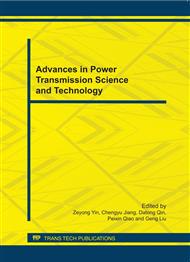p.399
p.403
p.407
p.411
p.415
p.419
p.424
p.428
p.434
Thermal Network Model for Temperature Prediction in Planetary Gear Trains
Abstract:
Their high-power-density design combined with their limited space make planetary gear trains often high power losses difficult to dissipate to the surround in time. The thermal network model for temperature prediction in planetary gear trains has been proposed. According to the principle of the conservation of energy, the thermal network model have been built and the model have been employed to analyze the transient temperature of the three stage 2K-H planetary gear trains used in Φ6.3m earth pressure balance(EPB) shield machine in series. The computed temperature results of the proposed TNM were in very good agreement with experimental measurements. It has been shown that this method is capable of performing temperature analysis. The results stemmed from the TNM have been shown that the temperature rise of the sun gears is quicker than the other parts and the PGT doesn’t reach thermal balance after the oil temperature reached 90 degrees, so the cooling system should be compelled.
Info:
Periodical:
Pages:
415-418
Citation:
Online since:
August 2011
Authors:
Price:
Сopyright:
© 2011 Trans Tech Publications Ltd. All Rights Reserved
Share:
Citation:


